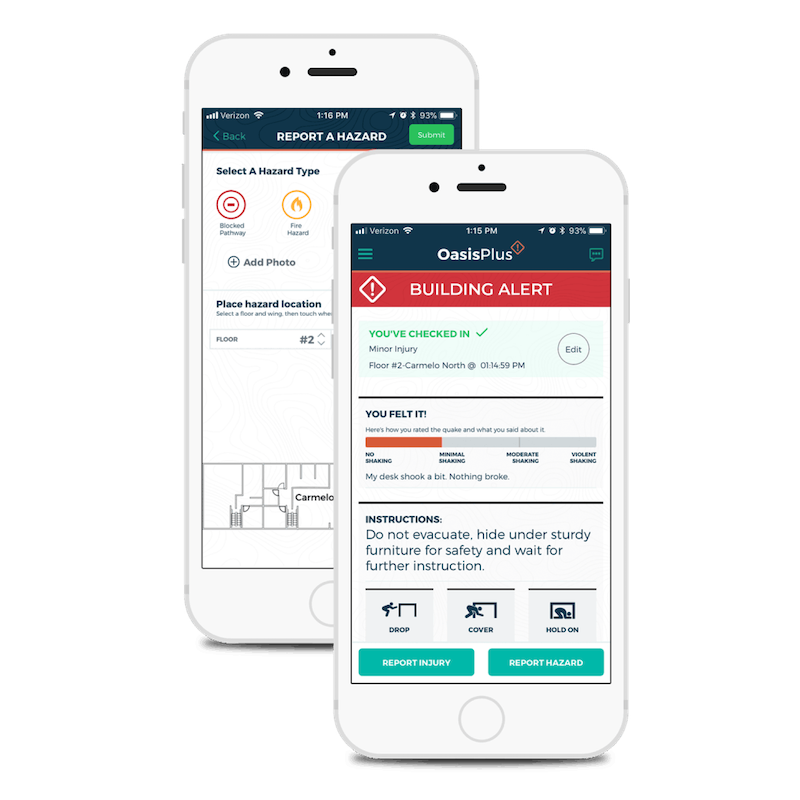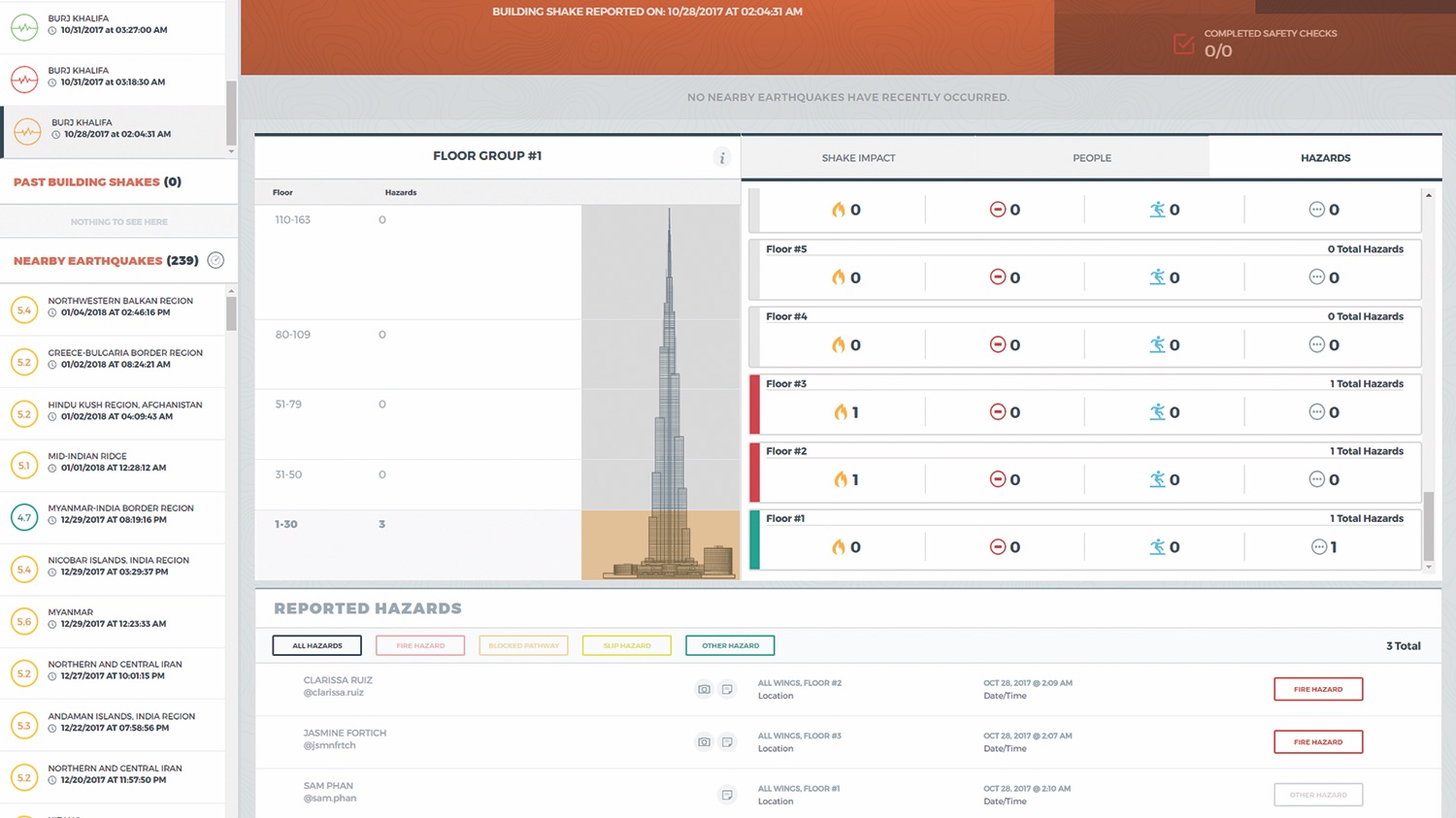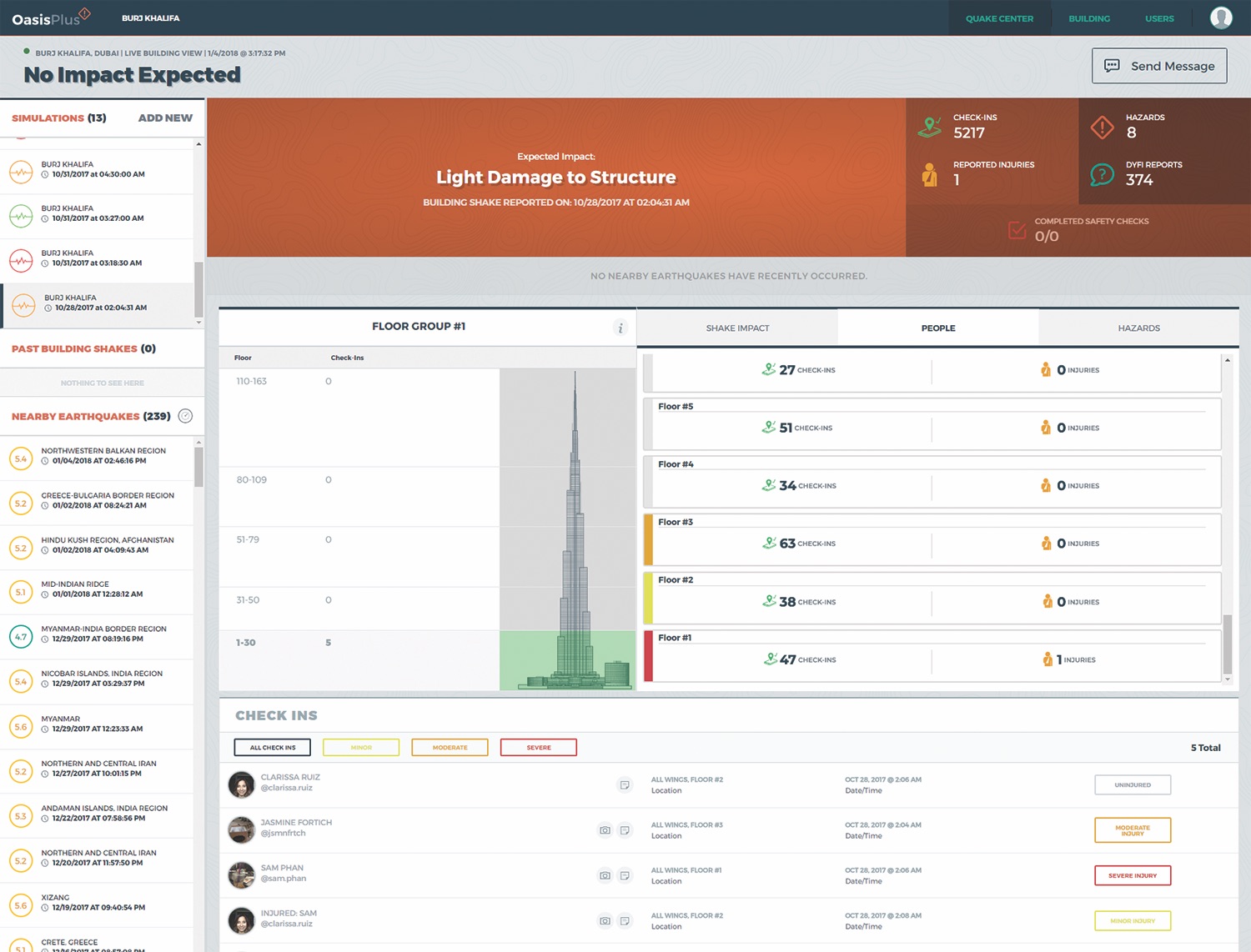The recent 7.1 magnitude earthquake in Southern California was a good reminder that, unlike many other natural disasters, earthquakes can strike at any time, without warning. And the panic and anxiety that comes with an earthquake doesn’t stop when the shaking does.
Questions concerning the safety of occupants, the functionality of the building’s critical services, and the integrity of the structure can be difficult to answer in the immediate aftermath.
The creators of OasisPlus hope their new earthquake response system can help. The platform, developed by Kinemetrics, provides the tools and information necessary for an effective earthquake response. The system includes advanced sensing technology, a command console, and a mobile app.
OasisPlus’s sensors measure the building’s movement as it shakes during an earthquake and then evaluates the results based upon a detailed understanding of the building’s performance against the type of motion measured. This data is then translated into a set of alert levels that indicate the expected impact the earthquake will have on different building areas. Alert levels are guided by international standards, including ASCE 41, to help turn the data into actionable information such as the probability of certain levels of damage at specific locations.
See Also: Smart sensor maintains privacy, enhances safety in sensitive spaces
The building leadership team can then use the Command Console to access the alert level information for each section of the building. Alert levels can range from occupant discomfort to potential structural or non-structural damage.
Meanwhile, the mobile app allows users to check-in and indicate their location and if they are injured. Injury and hazard reports made via the app show up immediately in the Command Console. If evacuation is necessary, the Command Console can be used to send an alert to the app that includes exit routes.
A report is automatically sent to the leadership team, response team, and the building’s structural engineering firm. It includes building alert level information and building response data, like inter-story drift, that engineers can use in assessing the structure.
“Not all earthquakes require extreme response or full evacuation, and many times the ability to keep patients under care in place—especially those in ICU settings—can lead to better overall outcomes,” said Ogie Kuraica, President and CEO of Kinemetrics. “OasisPlus can enable smart, real-time decisions that take emergency preparedness and disaster recovery to the next level.”
Related Stories
AEC Tech | Feb 20, 2024
AI for construction: What kind of tool can artificial intelligence become for AEC teams?
Avoiding the hype and gathering good data are half the battle toward making artificial intelligence tools useful for performing design, operational, and jobsite tasks.
Sustainability | Nov 1, 2023
Researchers create building air leakage detection system using a camera in real time
Researchers at the U.S. Department of Energy’s Oak Ridge National Laboratory have developed a system that uses a camera to detect air leakage from buildings in real time.
75 Top Building Products | Aug 7, 2023
Enter today! BD+C's 75 Top Building Products for 2023
BD+C editors are now accepting submissions for the annual 75 Top Building Products awards. The winners will be featured in the November/December 2023 issue of Building Design+Construction.
Resiliency | Aug 7, 2023
Creative ways cities are seeking to beat urban heat gain
As temperatures in many areas hit record highs this summer, cities around the world are turning to creative solutions to cope with the heat. Here are several creative ways cities are seeking to beat urban heat gain.
AEC Innovators | Jun 15, 2023
Rogers-O'Brien Construction pilots wearables to reduce heat-related injuries on jobsites
Rogers-O'Brien Construction (RO) has launched a pilot program utilizing SafeGuard, a safety-as-a-service platform for real-time health and safety risk assessment. Non-invasive wearables connected to SafeGuard continuously monitor personnel to prevent heat exhaustion on jobsites, reducing the risk of related injuries. RO is the first general contractor to pilot this program.
Office Buildings | May 15, 2023
Sixteen-story office tower will use 40% less energy than an average NYC office building
This month marks the completion of a new 16-story office tower that is being promoted as New York City’s most sustainable office structure. That boast is backed by an innovative HVAC system that features geothermal wells, dedicated outdoor air system (DOAS) units, radiant heating and cooling, and a sophisticated control system to ensure that the elements work optimally together.
Design Innovation Report | Apr 27, 2023
BD+C's 2023 Design Innovation Report
Building Design+Construction’s Design Innovation Report presents projects, spaces, and initiatives—and the AEC professionals behind them—that push the boundaries of building design. This year, we feature four novel projects and one building science innovation.
Design Innovation Report | Apr 19, 2023
Reinforced concrete walls and fins stiffen and shade the National Bank of Kuwait skyscraper
When the National Bank of Kuwait first conceived its new headquarters more than a decade ago, it wanted to make a statement about passive design with a soaring tower that could withstand the extreme heat of Kuwait City, the country’s desert capital.
Design Innovation Report | Apr 19, 2023
HDR uses artificial intelligence tools to help design a vital health clinic in India
Architects from HDR worked pro bono with iKure, a technology-centric healthcare provider, to build a healthcare clinic in rural India.
3D Printing | Apr 11, 2023
University of Michigan’s DART Laboratory unveils Shell Wall—a concrete wall that’s lightweight and freeform 3D printed
The University of Michigan’s DART Laboratory has unveiled a new product called Shell Wall—which the organization describes as the first lightweight, freeform 3D printed and structurally reinforced concrete wall. The innovative product leverages DART Laboratory’s research and development on the use of 3D-printing technology to build structures that require less concrete.



















